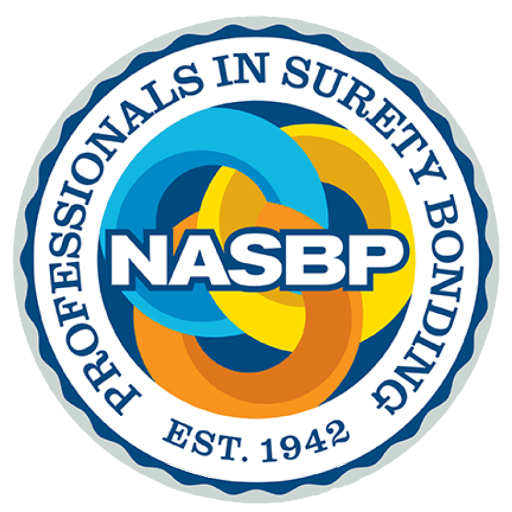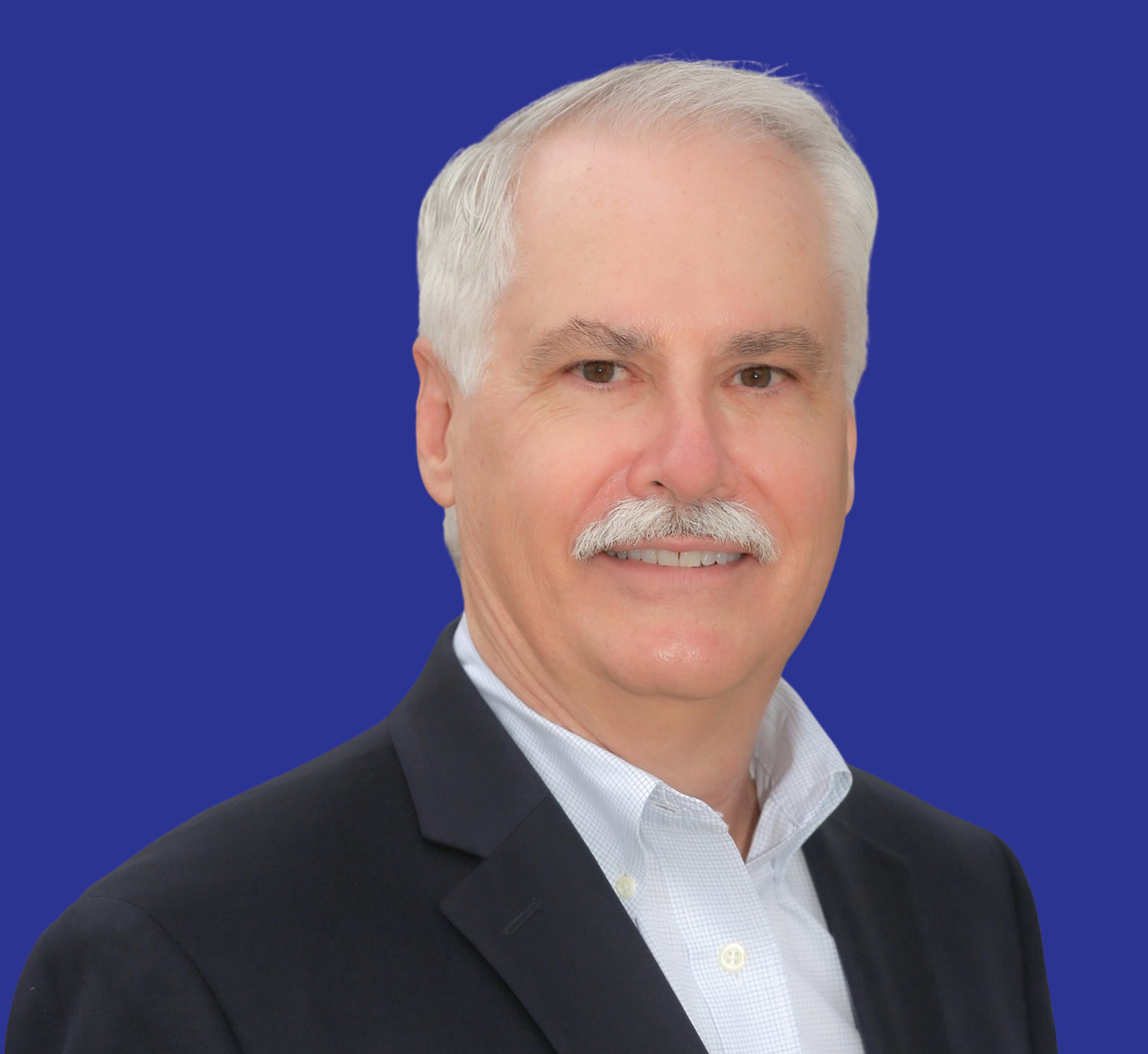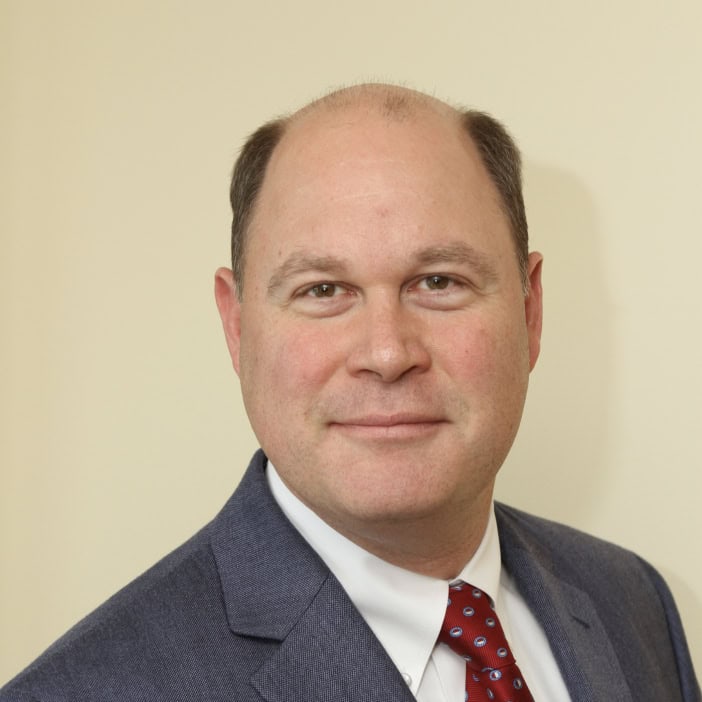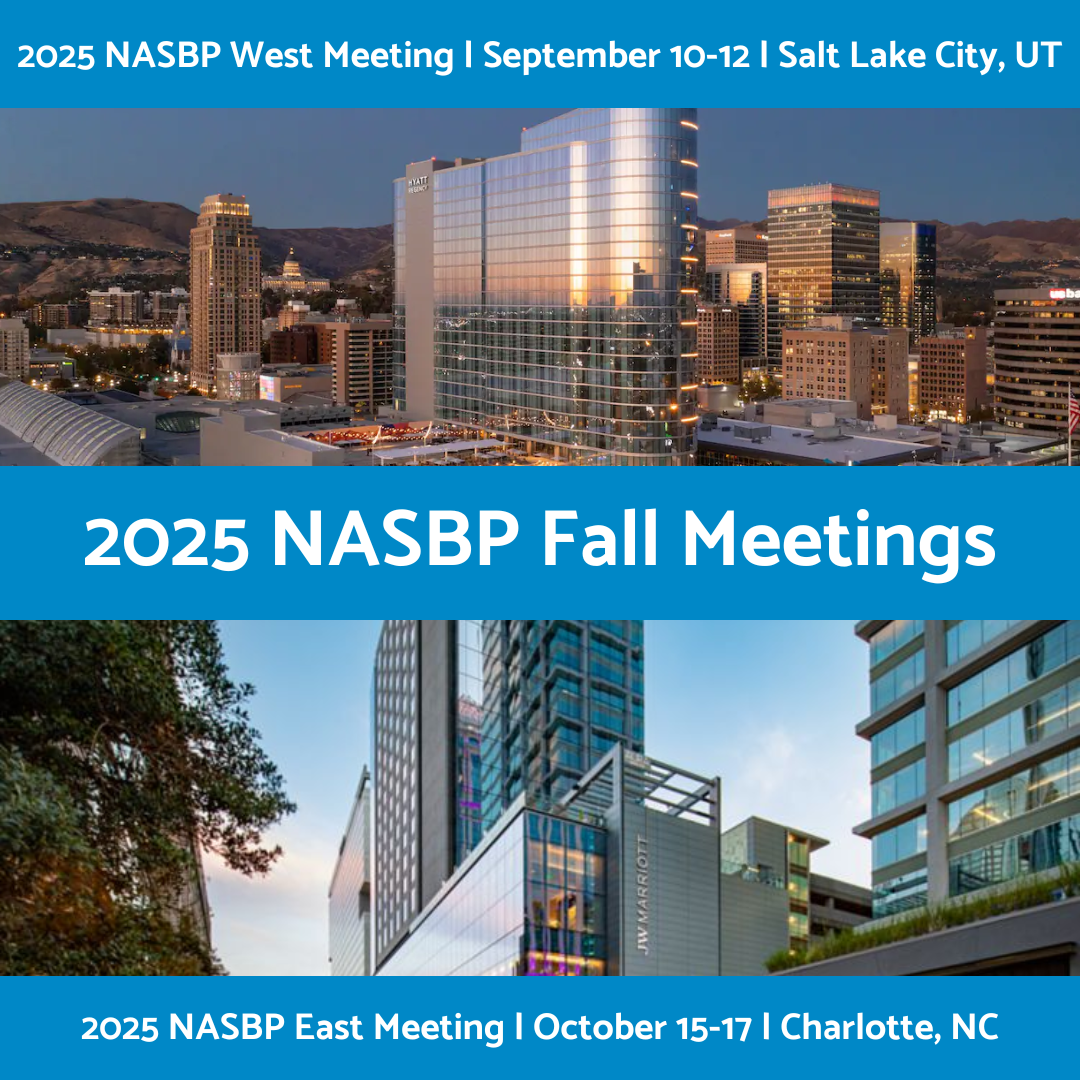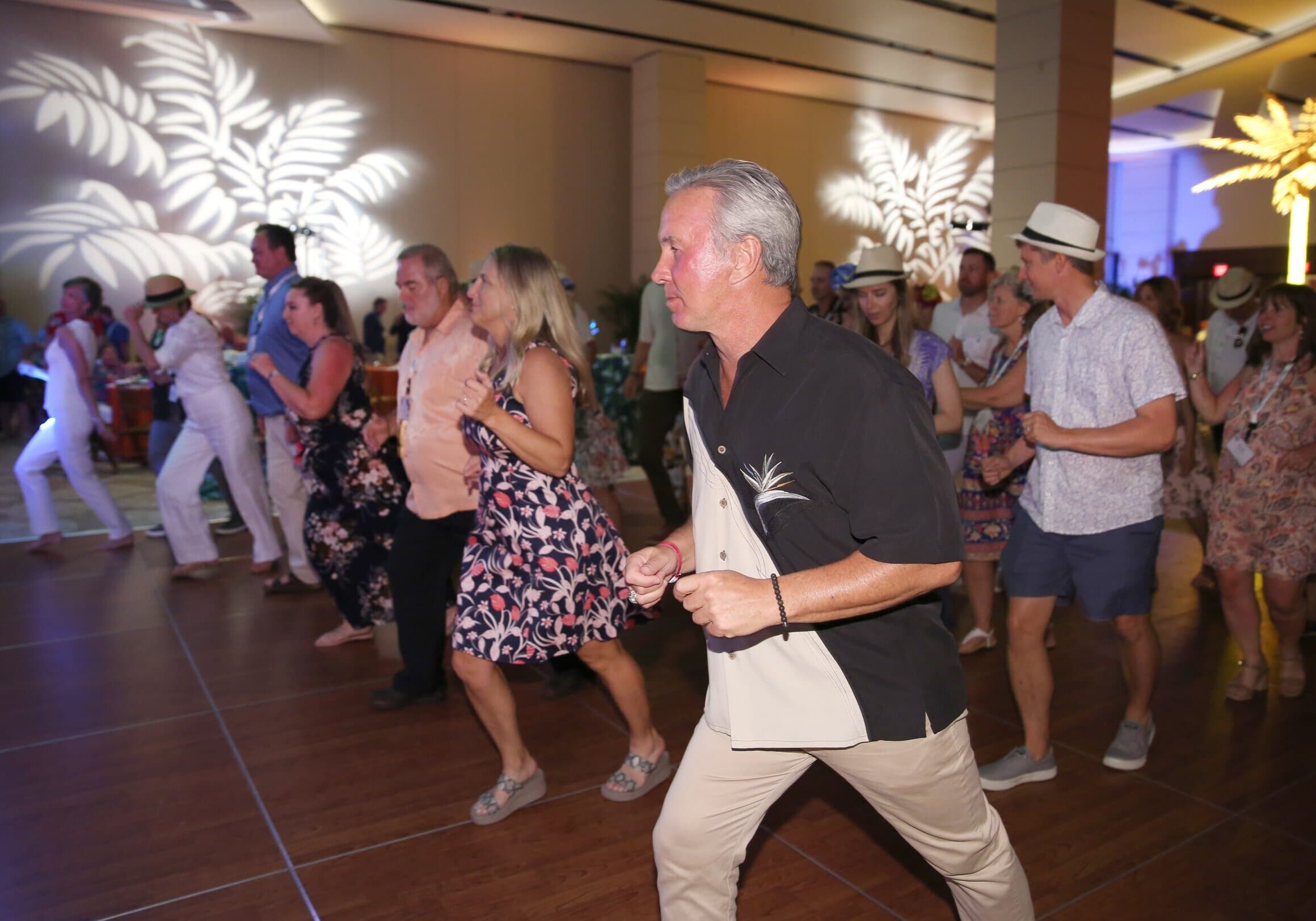March 2004
Register Today for NASBP’s 2004 Annual Meeting!
Don’t wait! Register today for the 2004 Annual Meeting & EXPO!! Join us April 25-28 for the 2004 NASBP Annual Meeting & Expo at the Marco Island Marriott Resort, Golf Club & Spa.
Visit our website for more information on registration, the Expo Hall, the golf tournament, optional activities, hotel reservations, airport transportation, and much more.
For more information, please visit the annual meeting section of our website: http://www.nasbp.org/am04/index.cfm
Registration Questions? Call (202) 686-3700 or email csims@nasbp.org
Hotel Questions? Call the Marco Island Marriott Resort,Golf Club & Spa at (239) 394-2511
Other Questions? Call (202) 686-3700 or email bmcgahey@nasbp.org
President’s Message
NASBP’s 62nd Annual Meeting: “Deserving Success . . . through Education, Outreach, and Professionalism”
While I am looking forward to a wonderful annual meeting in Marco Island, Florida, April 25-28, I also have been reflecting on this past year as your President. The theme for the annual meeting is “Deserving Success . . . through Education, Outreach and Professionalism,” which is exactly how I have attempted to serve as your President this year.
We have some exciting educational opportunities planned at Marco this year: from learning about electronic reverse auctions, accounting issues, one-year warranties, to surprise “history moments” during the General Sessions.
During the year, your Association has again successfully completed the William J. Angell Surety Schools: Level I during August in Dallas, Level III during November in Houston, and the concurrent Levels I & II during February in Houston. These schools are some of our industry’s best product offerings and really add value to each of our memberships.
Members are also participating in the “Back to Basics” seminars being held countrywide by the American Bar Association and the Associated General Contractors of America, and our work continues with our partners at SAA and friends at AGC on an educational surety claim piece.
Our Education efforts have tied in directly to our Outreach efforts. Countless members have spent numerous hours in the local communities speaking and educating the industry about surety and its processes using SIO information and materials.
As an Association, we have reached out to AGC, ASA, CFMA and ABC by providing speakers, conducting workshops, meeting with their respective national staffs, and advertising opportunities. The dividends of these investments are already being seen. NASBP has enjoyed the highest profile within these construction trade associations this year than I have seen in many years.
Reaching out to each other to better understand the issues of the day and find ways and means of cooperating for the improvement of our product and betterment of our industry will continue at Marco Island with the return of the “Surety Executives Panel.”
And finally, Professionalism. The team of John Hannum and John Bustard will lead a living, interactive ethics discussion/study on Monday morning in Marco Island.
Ethics–Professionalism; pretty esoteric subject matters. What has been attempted to be accomplished this year is for NASBP to lead, to act when and where appropriate, to openly communicate, and foremost, to treat each constituent with respect.
“Deserving Success . . . through Education, Outreach and Professionalism” is what we will offer in Marco. I hope you can make it.
On a final note, I want to thank you for the opportunity to serve as your President this past year.
Matthew K. “Matt” Cashion, Jr. is Secretary/Treasurer of The Cashion Company, Inc. in Little Rock, AR. He can be reached at Mattc@cashionco.com
Anti-Directed Surety Legislation Progresses in WV, TN
Legislation prohibiting directed suretyship in West Virginia (H 3150) awaits Governor Wise’s signature. As with other states passing similar or identical legislation the last three years, the West Virginia bill had no opposition and was approved unanimously throughout the legislative process. Tony Stanchina, of NASBP member company Friedlander Company, in West Virginia is to be congratulated for leading this legislative charge and lining up sponsors supportive of the measure. Tony’s sheer determination and persistence kept the bill from falling through the cracks near the end of the legislative session.
Meanwhile in Tennessee, anti-directed suretyship legislation passed the House (H 2573) and was referred to the Senate. The TN legislation is a direct result of a contact made at last year’s NCSL annual meeting with Representative Jim Hackworth, who sponsored the bill in the House. Rep. Hackworth also obtained the support of the Democratic leader in the Senate (Senator Ward Crutchfield) who introduced a Senate version (S 2368) of the bill. Tom McCarley, of new NASBP member company Palmer and Cay, is leading the legislative efforts in Tennessee. Marvin House, a contractor with Merit Construction Inc. of Knoxville, TN, and a member of the Surety Bonding Committee of the Associated General Contractors (AGC) also has assisted with the effort by writing letters to Tennessee lawmakers on behalf of the bill.
Besides West Virginia and Tennessee, New Jersey is the only other state with pending legislation. Because the NJ bill passed the House but not the Senate during the previous two-year session, it must begin again as a new bill in the current ‘04-‘05 session. Dan Regan, of G.R. Murray Insurance, is hearing up the NJ effort.
From NASBP’s General Counsel
Where A Project is Located and Language in the Bond
Will Dictate Claims Handling
Two recent decisions illustrate the two extremes sureties may face in dealing with bond clams. The first concerns circumstances in which the surety may be liable for more than the penal sum of the bond. The second deals with circumstances in which the surety may be discharged from any liability on the bond even when its principal defaulted on its contract.
In David Boland, Inc. v. Trans Coastal Roofing Co., 851 So.2d 724 (Fla. 2003), the Florida Supreme Court held that the performance bond surety was liable for the plaintiff’s attorney’s fees even though adding the attorney’s fees to the amount of the plaintiff’s bond claim resulted in a judgment in excess of the penal sum of the bond.
The court based its decision on a Florida statute that permits a successful plaintiff to recover its attorney’s fees in a claim against an “insurer” that had refused to pay a claim. The court reasoned that since the statute did not expressly limit recovery to the amount of the penal sum of the bond, the surety was liable for the plaintiff’s attorney’s fees in excess of the penal sum.
This case illustrates a common pitfall for sureties in that many state insurance codes do not differentiate between surety claims and insurance claims when regulating claims handling practices and penalties. One of the judges in this case suggested in the opinion that the legislature in Florida should consider amending the statute to distinguish sureties from insurers since, absent bad faith on the sureties’ part, liability in excess of the penal sum is inconsistent with the role of the surety.
On the opposite side of the liability spectrum, the U.S. District Court in Massachusetts recently held that a performance bond surety was discharged from any liability when the owner/obligee failed to provide the notices required by the bond before taking action to complete the project after the principal/contractor’s default. Seaboard Surety Company v. Town of Greenfield, 266 F. Supp.2d. 189 (D. Mass. 2003).
In that case, the owner declared the contractor in default and notified the surety of a claim on the performance bond. The bond form, which was similar to the AIA (American Institute of Architects) bond form, provided the surety with multiple options in handling the owner’s claim of default. Those options included completing the project itself; hiring a contractor, with the owner’s consent, to complete the project; or providing the owner with funds to complete the contract.
The bond also contained a provision that gave the owner the right to take action to complete the project on its own if the surety failed with reasonable promptness to take steps to move forward with one of its remedial options, but only after the owner gave the surety a 15 day notice of its intent to do so. In the Seaboard case, the owner was unhappy with the time taken by the surety to respond to the claim and took steps to complete the project on its own. The owner later sued Seaboard under the performance bonds seeking its damages. The court ruled that Seaboard was not liable because the owner had breached the bond by not giving Seaboard the notice required by the bond.
These two decisions illustrate that the state where the project is located and the language of the bond can have a profound impact on how a claim is resolved. Knowing these rules of the game where you do business can help you provide a better picture of the risks undertaken by the contractors and sureties with whom you do business.
NASBP’s General Counsel is Susan McGreevy of Husch & Eppenberger LC, Kansas City, MO.
What’s Happening on the Hill and in Federal Agencies?
- Federal legislation (HR 2802) to waive Miller Act bonds for certain 8(a) contractors under certain criteria, such as inability to obtain bonds through SBA’s Surety Bond Guaranty Program: The bill has been referred to the House of Representatives, but a vote has not yet been scheduled. When the date becomes known, NASBP will issue an action alert asking NASBP members to contact their representatives in the House about our opposition to the bill language at Sec. 208(a)(3).
- Amendment to the Federal Acquisition Regulations (FAR) clarifying requirements concerning powers of attorney accompanying bid bonds on federal contracts: A subcommittee of the FAR Council has drafted language for the Council’s consideration, which then will be published in the Federal Register as a notice of proposed rulemaking. NASBP is monitoring the situation and will contact members when the notice is published and the public comment period begins.
- Reauthorization of TEA-21: On 3/17/2004, the House Transportation and Infrastructure Committee held meetings to discuss House Speaker Dennis Hastert’s (R-Ill.) $275B six-year TEA-21 reauthorization proposal. As a result of the meetings, the Committee is expected to abandon its effort to pass a $375B program and instead proceed within Speaker Hastert’s guidelines. It is unclear if the Bush Administration would support a TEA-21 reauthorization measure with the level of investment called for by Speaker Hastert. The Senate already approved legislation to reauthorize the federal highway and transit programs (TEA-21) for six years. The Senate measure includes $318B in federal surface transportation program authorization with $294B in guaranteed highway and transit funding. The White House is opposed to the Senate bill and is even threatening a veto if the House were to approve a similar package providing more than $256 billion over six years.
Why NASBP’s SuretyPAC is NOT
an Ordinary Political Action Committee
Q: When was SuretyPAC established?
A: The NASBP Board of Directors approved its establishment on November 11, 1994.
Q: Why was SuretyPAC established?
A: SuretyPAC promotes communication and increases visibility with Members of Congress and is a mechanism for supporting candidates who understand the importance of the surety industry to construction and business in America. In addition, it levels the playing field between large companies and trade and professional associations and particularly helps small industries like the surety industry to have a voice in Congress.
Q: What makes SuretyPAC different from other insurance-related Political Action Committees (PACs)?
A: SuretyPAC is the only political action committee devoted solely to supporting congressional candidates friendly to the surety industry.
Q: Are there any restrictions on who SuretyPAC can solicit for contributions?
A: Yes. The Federal Election Commission (FEC) requires trade association PACs, such as SuretyPAC, to receive permission from member agencies to solicit its employees for contributions. Only one PAC may be authorized each year. SuretyPAC also is prohibited from soliciting the employees of any nonmembers or affiliated surety companies.
Q: May I contribute if my agency has not authorized or I work for an affiliate?
A: Yes, individual employees may freely contribute to the SuretyPAC even if their agency or company is not or cannot be authorized.
Q: May SuretyPAC accept cash or donations from corporate accounts?
A: No, the FEC requires all donations to be from an individual’s personal checking account.
Q: Do SuretyPAC contributors have any say in who receives funds?
A: SuretyPAC is unique in that it provides contributors with an opportunity to suggest and review candidates before disbursing funds. SuretyPAC also prefers to ask its contributors to hand deliver checks to selected candidates, rather than use association staff, to foster important relationships between constituents and their elected policymakers.
Q: Does SuretyPAC contribute to candidates running for state office?
A: No, SuretyPAC is solely a federal PAC and is prohibited from contributing to candidates other than those running for federal office.
Q: How many SuretyPAC-supported candidates won their races in 2002?
A: Of the 36 candidates SuretyPAC supported in the 2002 election cycle, 32 or 89% won their races.
Q: How do I qualify for a sticker on my name badge at NASBP meetings?
A: Because 2003 was the beginning of a new two-year election cycle, individuals must contribute to the SuretyPAC during the 2003-2004 cycle to qualify for a badge sticker at upcoming meetings. 2005 will serve as the start of the next election cycle. Of course, those who wish to contribute on an annual basis, rather than on a cycle basis, are always welcome to do so. Any amount may be contributed, but stickers are provided to those who contribute $100 or more.
Q: How do I make a contribution?
A: Send your contribution, in the form of a personal check made out to SuretyPAC, to Colin Chiles, Government Relations Coordinator, at NASBP Headquarters. Questions also should be directed to Colin at cchiles@nasbp.org or (202) 464-1175.
Bill Maroney, SuretyPAC Chair, would like to recognize the following members who are NEW contributors to the SuretyPAC Team:
| Stephen L. Cory Cory, Tucker & Larrowe, Inc. Metairie, LA |
David Cassidy Cassidy’s Associated Insurers, Inc. Hagatna, Guam |
| Larry J. Cramer George J. Siebers & Co., Inc. Merriam, KS |
Carl Dohn Dohn & Associates Palatine, IL |
| Martin Lyons Armitage & Co., Inc. Elmont, NY |
J. Spencer Miller Schwartz Brothers Insurance Agency, Inc. Chicago, IL |
| John W. Newby Mullis Newby Hurst Dallas, TX |
Thomas M. Padilla Manuel Lujan Insurance, Inc. Albuquerque, NM |
| Steve Poleman Rich & Cartmill, Inc. Tulsa, OK |
Patrick Pribyl |
| Jeffrey Reich Florida Surety Bonds, Inc. Altamonte Springs, FL |
Craig Remick Acordia Bloomington, MN |
| Sheryll Shaw IMA Denver, CO |
Mike Specht Minard-Ames Insurance Group Phoenix, AZ |
State Legislative Update:
New Introductions & Status of Previously Introduced Bills
Below is a sampling of some of the new legislation that has surfaced since the last edition of Pipeline:
CA A 2427
Insurers may not refuse to renew a policy on the grounds of mold if the policy contains an existing exclusion for payment of loss. Does not apply to surety.
FL H 1779
Removes resident agent requirements and provides requirements for licensing of nonresident agents.
MN H 2313
Removes engineering design and computer services from being eligible for procurement by reverse auctions.
MN H 2479
The state may require all bids for truck highway construction contracts over $5,000,000 to be submitted electronically.
MS H 1581 and MS H 1582
Clarify the statutory language on performance and payment bond claims. Do not make any changes to the actual time and manner for making claims, only cleans up the language contained in the statute.
NJ S 1249
Creates “Toxic Mold Protection Act of 2004.” Requires Department of Health and Senior Services to adopt permissible mold exposure limits and requires disclosure by landlords.
WI A 990
Municipalities may require a subdivider to provide a surety bond or other security to ensure the subdivider completes improvements. Does not specify what constitutes “other security.”
WV S 694
Requires that competitive bids for government construction projects be awarded to the lowest qualified responsible bidder and defines the term lowest qualified responsible bidder. Passed Both Houses; Awaits Governor’s Signature
Update of Previously Introduced Bills
Additionally, the following bills were reported on in previous editions of Pipeline. The original Pipeline report may be viewed by clicking on the link at the end of each status report:
AZ H 2105 (Eliminates competitive bidding for school districts): Passed House; Reported Out of Senate Committee (January’04 Pipeline)
AZ H 2351 (Eliminates performance and payments bond for simplified construction procurement program): Passed House; Reported Out of Senate Committee (January’04 Pipeline) UPDATE: The provision stating that “Any procurement which does not exceed the aggregate amount of less than $35,000” has been changed to $50,000. The small business program maximum aggregate dollar amount has been changed from $25,000 to $50,000 and the performance and payment bond requirements for the “simplified construction procurement program” (a program involving construction not exceeding $100,000) HAVE BEEN DELETED.
CO S 143 (Raises threshold limit): Passed Both House & Senate; Awaits Governor’s Signature (January’04 Pipeline)
FL H 785 (Bond waiver for Hillsborough County): Reported Out of Committee (February’04 Pipeline)
IN H 1266 (Permits reverse auctions): Passed Both House & Senate; Awaits Governor’s Signature (January’04 Pipeline)
KS S 408 (Bond waiver for municipalities): Passed Senate; In House Committee (February’04 Pipeline) UPDATE: Increases the Miller Act threshold from $40,000 to $100,000, but no longer contains the bond waiver language, which was deleted in the Senate Committee version.
KY H 405 (Ties threshold to small purchase authority): Reported Out of Committee (February’04 Pipeline)
MN H 1717 (Raises threshold for local jurisdictions and permits reverse auctions): Reported Out of Committee (January’04 Pipeline)
MO H 1362 (Other security may be substituted for subdivion bonds): Reported Out of Committee (February’04 Pipeline)
MO S 1028 (Permits reverse auctions): Passed Senate; To House Committee (January’04 Pipeline)
NM S 479 (Reduces maximum construction cost for design-build road and highway projects): Reported Out of Committee (February’04 Pipeline)
OK S 1357 (Raises bond threshold): Passed Senate; In House Committee (February’04 Pipeline)
TN H 3185 (Design-build for construction of public education facilities): Reported Out of Committee (February’04 Pipeline)
UT H 20 (Claims notice): Passed Both Houses; Awaits Governor’s Signature (January’04 Pipeline)
UT H 281 (Requires DoH establish minimum standard of mold exposure): Failed In House (February’04 Pipeline)
VA H 147 (Private construction bond requirement): Continued to 2005 (January’04 Pipeline)
VA H 148 (Design-build performance and payment bond requirements): Passed Both Houses; Awaits Governor’s Signature (January’04 Pipeline)
VA H 460 (Requires power-of-attorney attached to bond): Passed Both Houses; Awaits Governor’s Signature (January’04 Pipeline)
VA S 688 (Design-build contracts for public/private education facilities include provisions for performance and payment bonds): Failed in Senate (February’04 Pipeline)
WY S 15 (Performance bonds for private schools): Signed Into Law By Governor (January’04 Pipeline)
As bills are filed, Pipeline will report on the introduction of industry-related legislation. NASBP members and affiliates can access updates on 2004 legislative activity by visiting the “Member and Affiliates Only” section of the NASBP Web site at http://www.nasbp.org/membersonly_files/memlogin.cfm. Login and click on “Government Relations” and then “Bill Tracking 2004.” When asked for your User ID and Password, simply enter the same information used to access the “Member and Affiliates Only” section. Instructions on how to use the service are provided on the Web page.
See Your State Legislature in Action–From Your Office!
As the world has become wired, the number of states that provide live broadcasts of their legislative proceedings over Internet and on television has increased. Currently, live proceedings are available from 45 states, with Internet audio or video feeds available from 74 of the nation’s 99 legislative chambers. The National Conference of State Legislatures (NCSL) offers links on its Website to all of the available live state legislative proceedings. Please visit the following site if you’re interested to see what your state legislature offers: http://www.ncsl.org/programs/press/leglive.htm.
NASBP Offers Expo at Annual Meeting
NASBP will launch its 5th Expo in as many years, offering Annual Meeting attendees a one-of-a-kind venue to explore and learn about the latest industry products and services. Attendees will have an opportunity to test drive, discuss and purchase products and services, network with their peers and find solutions to their issues. The Expo Hall will also feature an Internet Cafe, where attendees can grab a beverage and snack while checking their email messages. Please plan to visit our Exhibitors in Marco Island next month!
List of Exhibitors – (as of March 29, 2004)
ABC Construction Executive Magazine
American Institute for CPCU and the Insurance Institute of America
Construction Industry CPAs Consultants Association (CICPAC)
Construction Financial Management Association (CFMA)
Funds Administration Services, LLC
InSure Vision Technologies, LLC
Surety Information Office (SIO)
Surety Recovery Management LLC
The Road Information Program (TRIP)
U.S. Small Business Administration
National Association of Surety Bond Producers (NASBP)
For more information, please contact Susan DeCourcey at (202) 686-3700.
Who Makes the Best Advocates—Paid Lobbyists or Constituents?
Believe it or not, when it comes to state legislation, constituents are the ones state lawmakers tend to listen to the most.
Why is this important? In the near future, NASBP will be asking its members participate in a grassroots effort to lobby the U.S. Congress about language in a bill, which would waive Miller Act bonds for certain 8(a) contractors (see related story is this issue).
The March 17th issue of the State and Local Reporter, a publication of the National Association of Home Builders, reported on a recent poll conducted by Frederick Polls on behalf of the Credit Union National Association (CUNA). CUNA asked 87 state legislators and 33 senior staffers to name the most persuasive contacts that influenced lawmakers’ decisions.
Topping the list were first-time constituents to grassroots lobbying who had never contacted lawmakers before. Second on the list were well known or politically connected constituents. And where were paid lobbyists? They were last on the list.
In terms of the preferred communication vehicle, those polled indicated that most state legislators use computers and are Internet savvy: 96% operate their own computers and use the Internet and e-mail; 93% read the e-mail of constituents, lobbyists, and special interests groups, and 87% use e-mail to respond to constituents.
The most influential special interest groups named were: (1) teachers; (2) police/firefighters; (3) members of the National Rifle Association; (4) those promoting insurance interests; (5) trial lawyers; (6) farmers; (7) home builders and realtors; (8) banks; (9) manufacturers; and (10) doctors.
No NASBP member should consider him/herself just another voter or just another voice. As can be seen from poll, constituents’ voices count and count big, and especially those who have never communicated with a lawmaker before. When the time comes, please answer the call and e-mail your legislators. And if you know of any teachers, police, firefighters, NRA members or trial lawyers, recruit them to join the cause, as well!
SIO Update: Put the LSA Directory to Use
| It all happens at the local level. The networking opportunities, presentations, seminars, and outreach efforts offered by the local surety associations (LSAs) across the nation are essential to get the word out on contract surety. LSAs are independent associations that address local surety bond concerns and strengthen the local surety market. They are a valuable resource for local surety professionals and members of the National Association of Surety Bond Producers (NASBP) and The Surety Association of America (SAA).
With nearly every state in the U.S. covered by an LSA’s territory, there is ample opportunity to be a part of a group where surety professionals gather to exchange ideas and develop outreach strategies. Each group has their own unique membership composition, goals, and activities, but they all have the interest of the industry in common. LSAs may also offer the opportunity to:
Consider how you could benefit from becoming more involved with your local community and surety bond market through an LSA. To locate an LSA in your area, visit the LSA Officers Directory at www.sio.org. Click on “Access Surety Professionals” and then select the “Local Surety Associations” link, or click here. The directory has recently undergone a series of updates, as the majority of LSAs have held their officer elections in the past few months. The Surety Information Office (SIO) is committed to working with LSAs to promote the industry by providing outreach materials, insight, and information. Contact SIO for additional information on LSAs and what SIO has to offer at sio@sio.org, (202) 686-7463. |
Recent Changes to the T-List
The Finance and Management Services Branch, U.S. Department of the Treasury, recently announced the following change to the Treasury List (T-List) of approved surety companies:
Addition to the Listing of Approved Sureties
Gray Insurance Company (The) (Effective 2/2/04)
Arch Insurance Company (Effective 3/19/04)
Madison Insurance Company (Effective 3/22/04)
Termination
The Guarantee Company of North America USA (Effective 3/22/04)
Name Change
Odyssey Reinsurance Corp. to Clearwater Insurance Company
(Effective 3/8/04)
Mid-State Surety Corporation to The Guarantee Company of North America USA
(Effective 3/22/04)
Redomestication
United States Fire Insurance Company
From New York to Delaware (Effetive 12/31/03)
For more information, go to //http://fms.treas.gov/c570/c570.html
NASBP 2004 Meetings
NASBP Annual Meeting
Marco Island Marriott & Golf Club
Marco Island, FL
April 25 – 28, 2004
(941) 394-2511
Regions 8, 9, 10 & 11 Annual Meeting
Hyatt Regency Newport
Newport, RI
July 22 – 25, 2004
(401) 851-1234
William J. Angell Surety School Level I
Dallas Fairmont Hotel
Dallas, TX
August 11-14, 2004
(214) 720-2020
Regions 1, 2 & 3 Annual Meeting
Hyatt Regency Lake Las Vegas
Henderson, NV
September 30 – October 2, 2004
(702) 567-1234
Regions 4, 5, 6 & 7 Annual Meeting
Royal Sonesta Hotel New Orleans
New Orleans, LA
In the French Quarter
October 14 – 17, 2004
(504) 586-0300
Mid-Year Board Meeting
Sheraton Wild Horse Pass Resort
Phoenix, AZ
October 27 – 30, 2004
(214) 720-2020
William J. Angell Surety School Level III
Dallas Fairmont Hotel
Dallas, TX
November 10 – 13, 2004
(214) 720-2020
Get Important Surety Industry News & Info
Keep up with the latest industry news and NASBP programs, events, and activities by subscribing to NASBP Smartbrief.
